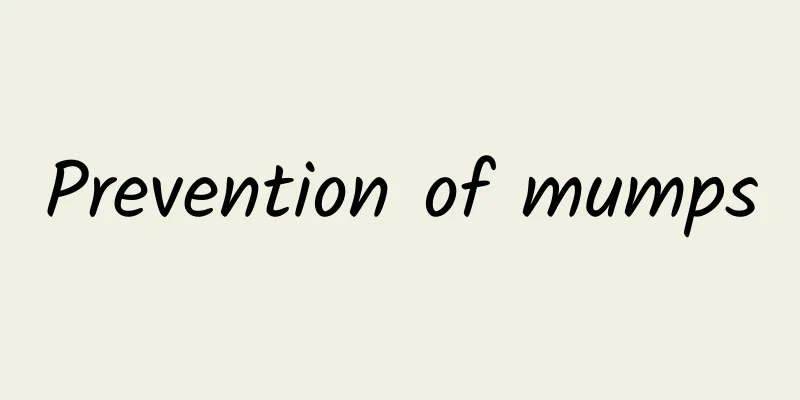Treatment of asthma

|
How to treat asthma and reduce the harm it causes to human health is a major challenge facing medicine today. Many people are looking for the best way to treat asthma, so how to treat it well? Experts point out: The best way to treat asthma is prevention and treatment. Experts point out that respiratory diseases cannot be cured for a long time and recur repeatedly, which puts a great burden on patients. Many patients with respiratory diseases are eager to find the best way to treat asthma. Treatment of asthma 1. Primary prevention Environmental control, eliminating the inducing factors around the patient: Environmental pollution is an important factor leading to the increased incidence of asthma. Common triggers of asthma attacks include: animal fur, cigarette smoke, dust mites, cockroaches, aerosols with strong odors, pollen, weather changes, colds, running, fatigue, etc. According to statistics, 70% to 90% of viral infections have become the primary cause of asthma in infants and young children, and viral infections should be actively prevented and treated. Asthma is hereditary. According to statistics, if one parent has a family history of asthma, the incidence of asthma in offspring is 40%; if both parents have it, the incidence of asthma in offspring exceeds 50%. Therefore, asthma patients should consider genetic factors when choosing a spouse. During pregnancy, try to avoid exposure to allergens in the environment. As for exercise-induced asthma, we cannot simply prevent children from participating in sports events or physical education classes. This can easily make children become unsociable and develop a sense of inferiority, which is not conducive to their healthy physical and mental development. Children with asthma should participate in exercise under the guidance of a doctor. 2 Secondary prevention Early diagnosis can prevent the progression of the disease; only early diagnosis can lead to early prevention and treatment. In the past, it was believed that asthma caused reversible airway obstruction, and when the obstructive factors were removed, the airway would return to normal. It has been proven that asthma is a chronic inflammatory disease of the airways that leads to airway hyperresponsiveness, edema of the airway mucosa and submucosal membrane, epithelial cell shedding, excessive secretion of mucous glands, bronchial smooth muscle spasm, and vascular dilation and exudation. Repeated attacks of asthma cause airway remodeling and irreversible changes. This change was confirmed under an electron microscope in bronchoscopic tissue of adult patients. There is no data on this aspect for children, but based on the measurement of NO concentration in the sputum and exhaled breath of children, it was found that there were changes similar to those after airway remodeling in adults. It is suggested that after repeated attacks of asthma in children, there is a possibility of irreversible airway changes. Therefore, childhood asthma should be controlled as early as possible. For early diagnosis, doctors must be aware of asthma, especially atypical asthma: such as latent asthma, infantile asthma, cough variant asthma, etc., especially the latter, many doctors are still not aware of it. When encountering patients with repeated coughing and no wheezing in the lungs, they will diagnose it as chronic bronchitis and give them antibiotics and expectorants and cough suppressants, which will cause the patient to have a long-term cough that does not heal for a long time. 3. Tertiary Prevention Actively treat the symptoms of the attack and prevent the disease from changing. In the tertiary prevention of asthma, it is suggested to actively treat the symptoms of attacks and prevent the progression of the disease. Common symptoms of asthma: cough, wheezing, chest tightness, wheezing sounds in the lungs, and when the attack is severe, difficulty breathing; shortness of breath; expiratory wheezing; flared nostrils when inhaling (especially in young children); intermittent and incomplete speech; irritability and restlessness (especially in young children); shrugging, hunching or sitting up to breathe (more common in older children). It is particularly important to point out that although wheezing in the lungs is an important condition for diagnosing asthma, it is not a necessary condition. The cough variant asthma mentioned above is asthma with only coughing but no wheezing, and no wheezing sound can be heard in the lungs. In addition, when asthma attacks severely, what is often heard when auscultating the lungs is "quiet lungs." Wheezing is a high-pitched sound caused by airflow through the narrower lumen during exhalation. However, if the lumen is extremely narrow and air can hardly pass through, wheezing cannot be produced. At this time, the condition is critical and requires emergency treatment. How to treat asthma? In order to help our patients get rid of the disease as soon as possible, we should pay attention to diet therapy from now on. In fact, diet therapy is much better than drug therapy. They are very helpful in treating asthma. I wish you a healthy body as soon as possible. |
>>: How to treat internal hemorrhoids
Recommend
Can eating hedgehogs cure stomach problems?
Hedgehog is an animal that people are familiar wi...
Yang Fire and Yin Fire
Yang fire and Yin fire are actually a term in tra...
What is the reason for the slow growth of the fetus?
During the pregnancy check-up, if you find that t...
Can Chinese medicine promote ovulation?
Many women have poor ovulation or no ovulation. T...
What food is good for hepatitis patients?
In addition to paying attention to the doctor'...
Can I eat longan when I have my period?
There are many foods that you cannot eat casually...
How to treat breast calcification?
The breast is a relatively important part of the ...
When does the follicle rupture?
The female ovary, a reproductive organ, mainly fu...
Heat urticaria
Heat urticaria refers to the situation where urti...
Diet for patients with hypothyroidism
Patients with hypothyroidism cannot consume high-...
What to do if you can't stop your nosebleed
Nosebleeds are very common, and there are many wa...
What to eat for nosebleeds? Six foods can relieve them
If nosebleeds occur, we can regulate it through d...
How to recover from a knee injury
If the knee tissue is damaged, it is quite seriou...
The difference between horse teeth thrush
Oral canker sores and thrush are two different di...
What are the effects of low TSH during pregnancy?
If a woman has low TSH during pregnancy, it is li...









